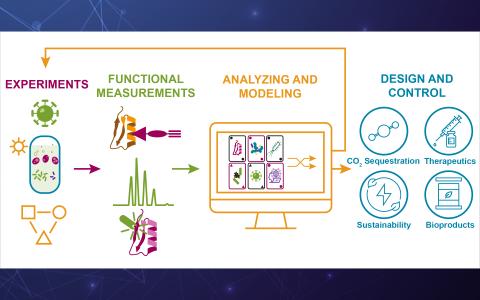We report the construction of a database of infrared spectra aimed at detecting the gases emitted by biomass burning. The project uses many of the methods of the Pacific Northwest National Laboratory (PNNL) infrared database, but the selection of the species and special experimental considerations...
Filter results
Category
- (-) Energy Resiliency (3)
- (-) Chemistry (2)
- (-) Atmospheric Science (1)
- (-) Coastal Science (1)
- Scientific Discovery (72)
- Biology (49)
- Earth System Science (28)
- Human Health (25)
- Computational Research (11)
- Microbiome Science (10)
- Integrative Omics (8)
- National Security (7)
- Computing & Analytics (5)
- Data Analytics & Machine Learning (5)
- Materials Science (5)
- Chemical & Biological Signatures Science (2)
- Computational Mathematics & Statistics (2)
- Renewable Energy (2)
- Weapons of Mass Effect (2)
- Data Analytics & Machine Learning (1)
- Energy Efficiency (1)
- Energy Storage (1)
- Plant Science (1)
- Solar Energy (1)
Category
The PNNL-SERDP database was constructed by PNNL to generate the quantitative infrared spectra of gases associated with biomass burning; the reference data are to allow detection and quantification of such gases via infrared absorption spectroscopy. Candidates for the database were selected based on...
Category
Datasets
2
Category
Datasets
1
Category
Datasets
1
PNNL’s Vision Statement for Equity in the Power Grid Drawing from a wealth of interdisciplinary research in grid modernization, PNNL is spearheading an effort to advance equity and energy justice through the role of scientific research with the goal of building an advanced national power grid...
Datasets
2
Predictive Phenomics is addressing the grand challenge of understanding and predicting phenotype by identifying the molecular basis of function and enable function-driven design and control of biological systems .
Category
Datasets
0



